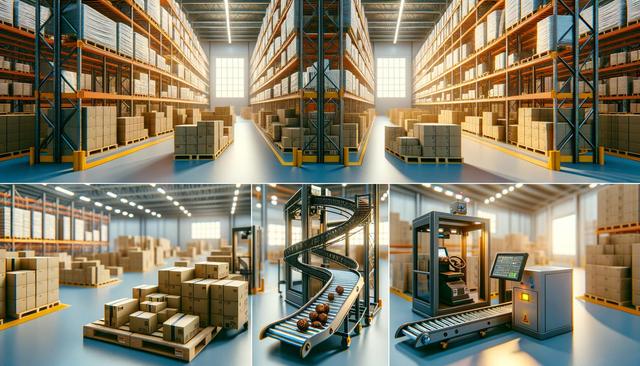Understanding the Role of Picking and Packing in Warehouse Operations
In warehousing, the terms “picking” and “packing” refer to two vital processes that are part of fulfilling customer orders. Picking involves selecting the correct items from storage locations based on a packing list or digital order system. Packing, on the other hand, is the process of securely preparing those picked items for shipment. Together, these procedures form the backbone of order fulfillment and have a significant influence on delivery speed, accuracy, and cost-efficiency. Efficient picking e packing de armazém operations can improve productivity, reduce errors, and enhance overall customer experience.
As e-commerce and logistics demands grow, warehouses need effective systems to handle high order volumes. Manual methods still exist but are increasingly being supplemented or replaced by automated systems. These include barcode scanning, mobile picking devices, and even robotic assistance. Regardless of the technology used, the goal remains the same: to ensure that the right product is delivered in the right condition, to the right customer, at the right time.
Types of Picking Strategies Used in Warehousing
There are several picking strategies that warehouses can implement depending on their size, product variety, and order volume. Each method has its advantages, and the right choice can lead to significant operational improvements. Common picking techniques include:
- Piece picking: Workers pick one order at a time, ideal for small warehouses or low order volumes.
- Batch picking: Multiple orders are picked in one trip, reducing travel time within the warehouse.
- Zone picking: The warehouse is divided into zones, and workers pick items within their assigned zones. Orders are then consolidated for packing.
- Wave picking: Combines batch and zone picking, often scheduled by shipping times or delivery routes.
Choosing the appropriate picking method can help reduce labor costs, shorten fulfillment times, and minimize human errors. For instance, zone picking limits worker movement across the warehouse, making it suitable for large-scale operations. Integrating these methods with warehouse management systems (WMS) can further streamline the process and allow for real-time inventory updates.
Best Practices for Efficient Packing Processes
Once items are picked, the packing process ensures that they are protected and correctly labeled for shipping. Efficient packing involves more than just placing items in a box. It includes selecting the right packaging materials, verifying order accuracy, and optimizing space. Key practices in packing include:
- Using appropriately sized boxes and void fill materials to prevent item movement during transit.
- Labeling packages clearly with shipping and return information.
- Scanning items during packing to ensure order accuracy.
- Utilizing packing stations with ergonomic designs to reduce strain on workers.
Automation can also play a role in packing. Automated packing machines can measure, cut, and seal packages with minimal human intervention. For operations with high volumes, this can significantly reduce time and labor. Sustainability is another consideration, with many businesses opting for recyclable materials and minimal packaging to reduce environmental impact.
Technology and Tools That Enhance Picking and Packing
Modern warehouses rely heavily on technology to improve the picking e packing de armazém workflow. Warehouse Management Systems (WMS) are central to this transformation, offering features like real-time inventory tracking, order prioritization, and performance analytics. Some of the key tools that support picking and packing include:
- Barcode scanners and RFID: Enable accurate and fast identification of items during picking and packing.
- Mobile devices: Provide workers with real-time access to order information and warehouse maps.
- Conveyor belts and automation systems: Speed up item movement and reduce manual handling.
- Robotics: Assist in picking, particularly in environments with repetitive tasks or hazardous conditions.
These tools help reduce human error, speed up order fulfillment, and allow for better planning and resource allocation. For instance, predictive analytics in WMS can forecast demand trends, helping warehouses prepare for peak periods and adjust staffing or inventory levels accordingly.
Improving Accuracy and Customer Satisfaction Through Optimization
Accuracy in picking and packing directly influences customer satisfaction. Incorrect or damaged orders can lead to returns, negative reviews, and increased operational costs. To minimize these risks, warehouses often implement quality control checkpoints throughout the order fulfillment process. These checkpoints may include double-checking orders during packing or using weight sensors to verify that the correct items are in the package.
Training staff is another crucial aspect. Well-trained employees are more likely to follow protocols, handle products correctly, and use equipment efficiently. Cross-training workers in both picking and packing roles can also increase flexibility and reduce downtime. Additionally, regular audits and performance reviews can identify areas for improvement and ensure that standards are maintained over time.
Customer feedback should not be overlooked. Monitoring reviews and return data can highlight recurring issues in the picking and packing process. This information can then be used to adjust procedures or retrain staff, contributing to continuous improvement and higher customer satisfaction levels.
Conclusion: Streamlining Warehouse Operations for Long-Term Success
Warehouse picking and packing are more than just routine tasks—they are pivotal processes that shape the efficiency and reputation of a logistics operation. By implementing the right strategies, tools, and training, warehouses can reduce errors, optimize workflows, and meet growing customer expectations. Whether dealing with a small-scale operation or a large distribution center, investing in effective picking e packing de armazém practices is key to staying competitive in today’s fast-paced market.












